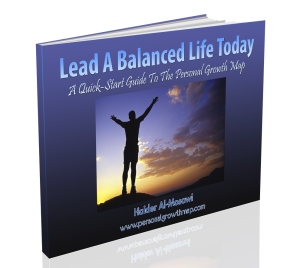 We spend a great deal of our time reading. And the more committed we are to personal growth, the more we want to learn and, therefore, the more we are likely to want to read.
We spend a great deal of our time reading. And the more committed we are to personal growth, the more we want to learn and, therefore, the more we are likely to want to read.
Sadly, the growth in our reading pile doesn’t necessarily reflect the personal growth we experience. It seems that a lot of time and effort is spent reading, without experiencing any lasting results. And we assume that we’re simply not reading enough.
But the truth is, the problem isn’t lack of reading, but lack of effective reading.
These 7 steps will help you gain more out of what you read.
Step 1 – Shift Your Focus
Imagine all your reading material to your left. All the physical books, journals, and magazines you want to read; your Kindle device loaded with your Amazon purchases, your laptop with the rest of your digital library, and the Library of Congress, if you happen to be that ambitious.
And imagine your life to your right. Your kids playing in the yard, you working at your desk, your spouse reading a novel, etc.
What many of us do is face the reading pile on the left, and see life as a distraction from our reading. Your children want your attention, your spouse wants your love, your business wants your commitment, etc.
“How the hell am I supposed to get all my reading done when this stupid life thing is getting in the way!?”
Reading feels like an obligation, and a pretty heavy one at that. There’s too much to read, and not enough time to read it.
And the more we discover we need to read, the less reading we get done.
The first step you need to take is to shift your focus from reading to living.
Turn to your life on your right and ask yourself: What do I need to read about to improve my life?
You don’t live to read more. You read to live better.
Focus on the results you want and the life you want to live, not the books you have to read.
Step 2 – Pick What’s Relevant
Not everything you want to read is applicable to your life. At least, not right now.
You don’t want to read a step-by-step guide on writing a business plan if you’re not thinking of starting your own business this year. You might want to pick out a book on the feasibility and advantages of starting a business, because that’s more relevant to where you are.
By reading what’s relevant, you’ll have better retention, and can apply what you read in your life to get the results you’re after!
Not rocket science, I know.
But how many of us take relevance into consideration? We’ve been brainwashed to think that knowledge is power, and so we seek to acquire it without being selective about what knowledge to acquire. In fact, we often let others decide what we should be reading (usually what they’re selling), and don’t stop to consider if it’s the best thing for us to read or not, given our own lives, and not their bank accounts or traffic ratings.
Look to your life on the right and ask yourself: What areas of my life are in desperate need of my attention? What problems need urgent solutions? What can I read to help me address them?
Now look through your reading pile and see what you can pick out from there. If nothing matches your needs from your reading pile, look elsewhere. Just because you already have those books doesn’t mean they’re more important than what’s relevant.
Relevance trumps convenience.
I would encourage you to consider 3 factors when picking out what’s relevant:
- The elephant in the room: If you’re facing a serious problem in your life, it will need your attention more than any other topic. Don’t ignore it and hope the elephant will graciously leave the room. It might cause a lot of damage on its way out.
- Your comprehension level: If you’re clueless about a subject, it might be more helpful to read a Dummies guide than an expert’s manual. You don’t want to feel lost while reading. Otherwise, you could lose your motivation to continue reading, or your confidence in getting the results you want. Read the stuff that makes you feel confident, not confused.
- Life balance: Focusing on improving a single life area won’t serve you well in life… or in that life area. Every area of your life impacts every other area, which is why I encourage people to take all life areas into consideration. I identify our life areas as: Spiritual, Intellectual, Psychological, Social, Professional, Recreational, and Physical. You want to make progress in each and every life area.
After picking out the most relevant reading material for yourself, you can ignore the rest (for now).
Step 3 – Find Alternatives To Reading
Now that you know what’s relevant to your life, consider ways of acquiring the same information, but without having to do any reading (your focus should be on the results you want, remember?).
What if you can listen to a book, rather than read it? That way, you get to go through the same content, but at times where you won’t be able to read (while driving, for example).
How about meeting up with an expert on the subject, or having a Skype conversation with a friend?
You could get someone else to summarize the book for you, or find videos that deal with the topic you want to learn more about.
Whatever the alternative might be, since you’re after the results, you can find one that’s more appropriate for you than reading, and offers advantages over reading.
Step 4 – Take Notes While You Read
This step is at the heart of the reading process. Taking effective notes will help you make the most out of what you read. Some people highlight sentences, or leave one-word notes in the margins. But how are they going to use them? And – more importantly – what for?
I need your undivided attention here.
This is an extremely important practice for you to get acquainted with, and it tackles the reason why we don’t get much out of what we read.
The first principle to effective note-taking is: Separate the theory from the action steps.
Not all information is created equally, or can be used in the same way. You need to divide information in a way that reflects how you’ll be using it.
Some of what you read influences your understanding, and some asks you to take action. Lumping the two together under the same list of notes means that you’ll read what you should be doing, when you should be doing what you’re reading. You shouldn’t read an exercise. You should do it. Maybe not while you’re reading through the book, but certainly afterwards.
Summarize the key ideas of what you read, and keep a separate list of the things you will do after reading.
And in case you’re wondering: nodding in agreement isn’t an action, which might help explain why we don’t usually get the results we want. 😉
Step 5 – Write Down Your Own Thoughts
One of the most common misconceptions about reading is that it’s a passive process, where you simply take in the information presented to you.
You might get ideas that are unrelated to what you’re reading.
You could strongly disagree with what you read, and end up making notes that suggest a completely different approach to the one being recommended by the author.
You might also find yourself building on what you read, or filling the gaps that haven’t been covered.
Your mind is active while reading. Don’t overlook its wisdom simply because you want the information being presented to you. You’ll be surprised by how much you already know, and what great insights you can come up with!
Step 6 – Put Your Reading into Practice
Now that you have a to-do list, you know what to do after reading. If you don’t go through the to do list, and get the tasks done, then it’s very unlikely that you’ll experience any results from your reading. In other words, what you have read hasn’t contributed to your life, or helped you improve it.
It’s essential that you are keen on getting results, and not simply going through the mechanics of reading, without generating an output. But reading is only part of the process. Doing is the next phase we need to go through to achieve our goals, and experience personal growth.
This may sting a bit, but it’s important for you to acknowledge: Many of us use reading as an excuse to avoid doing. It’s a distraction we can convince ourselves is essential and productive, but remains a distraction, nevertheless. If you have to confront your partner about an issue, then confront your partner. Don’t read more and more books about how to improve your relationship, so that you can put off the confrontation.
If you want results in your life, you will have to put the books down at one point, and do what they ask you to do, or what you know you should do.
Step 7 – Evaluate What You Read… and How You Read
To improve your approach to reading and, therefore, the results you can get out of reading, it’s important to evaluate the quality of what you read, and how your approach can be improved.
Did a writer get you feeling motivated while reading, but failed in helping you sustain that feeling in your life?
Why did that happen? Did you not follow his advice properly, or was it impractical?
Is there a writer with a style that resonates with you, and can get you to apply his advice with ease?
Be aware of what you find useful in what you read, and what you find ineffective.
You may realize that you’re taking too many notes, or not enough notes, or don’t understand the notes you take when you look back at them.
Use these observations to guide what you read, and how you read.
With these 7 steps, you can increase the chances of getting more out of what you read, without feeling guilty for not having read everything you can get your hands on.
If there are more steps or guidelines you can share that have helped you get more results out of what you read, then I’d love to hear from you!
Please share your thoughts in the comments section. 🙂
Photo credit: striatic


